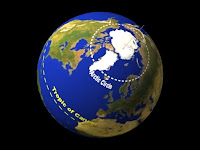
Fallingwater, Frank Lloyd Wright's masterpiece, has been featured on a U.S. postage stamp, on the cover of Time magazine, and in perhaps a shelf-ful of coffee table books. Since the house was opened to the public in 1964, some 3.5 million visitors have made the pilgrimage to its sylvan location off Route 381 in the hills of western Pennsylvania. Wright's stunning creation-the living room with its mound of native sandstone swelling up through the floor, the ribbons of red-trimmed steel windows, and, above all, those daring cantilevered planes hovering over the falls of Bear Run-has enchanted architectural critics and the general public since its completion 64 years ago.
Too bad it wasn't built properly. While millions of people have a nodding acquaintance with Fallingwater, relatively few of them know the latest, most dramatic chapter in its history: Only an ingenious repair, completed a few years ago, removed the growing risk that a large chunk of the house might tumble into the creek below.
The problem had been brewing since the beginning. The concrete beams that support the hung-in-space living room, its two adjoining terraces, and the master bedroom terrace above were too weak for the load they needed to carry. The beams sagged from the moment their supports were removed during construction and continued to droop a little more each year, until by 1994 they were an alarming 4 to 7 inches out of level. It took five years of assessment and planning, four months of actual work, and $1.5 million to stabilize the structure, but now, at last, Fallingwater is secure in its airy perch.
When Wright wrote in 1955 that "Fallingwater is a great blessing-one of the great blessings to be experienced here on earth," it wasn't just more hyperbole from the legendary self-promoter. "The house has a real presence in the American psyche," says Richard Cleary, an architectural historian and Wright scholar at the University of Texas at Austin. "That view of it over the waterfall is a sort of perfect American fantasy. It showed we could have both technology and the natural world, and make them work beautifully together."
 Taktsang Monastery, also known as the Tiger's Nest, clings to the slide of a cliff about 10,000 feet above ground in Bhutan's Paro district. The monastery was built in the 17th century and damaged in a fire in 1998.
Taktsang Monastery, also known as the Tiger's Nest, clings to the slide of a cliff about 10,000 feet above ground in Bhutan's Paro district. The monastery was built in the 17th century and damaged in a fire in 1998.



.jpg)
.jpg)





















































